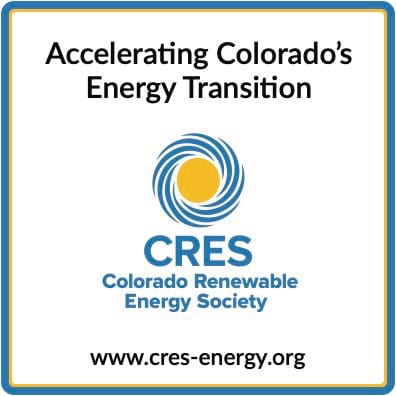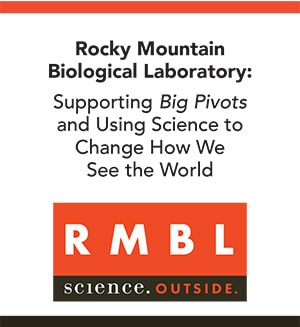Yampa Valley group tilting emphasis somewhat in rebranding
Sustainability seems to be losing favor as the name for environmental-tilting groups. Witness the name change of the Steamboat Springs-based Yampa Valley Sustainability Council.
As of Thursday, it is named the Western Resilience Center. It has a revised logo and a new website.
Formed in 2009 as a non-profit, the organization has embraced sustainability with a Green Buildings Tour, a monthly speaker event, and sponsorship of community recycling events.
It has been an advocate in the water realm. It has retained Paul Bony, with a strong track record at Delta-Montrose Electric, to push for geothermal. in the Yampa Valley. Representatives show up at hearings and meetings to testify
In the last five years, the organization deepened its focus on climate action, including actions that reduce greenhouse gas emissions and increase resilience to the impacts of changing climate.
But aren’t sustainability and resilience more or less one and the same?
This U.S. Department of Interior posting — somewhat surprisingly, given the gutting of the Trump administration of any notion of climate change — parses the difference in this way:
“Resiliency is the ability to adapt to changing conditions and withstand, and rapidly recover from, disruptions due to emergencies. Sustainability is meeting the needs of the present without compromising the ability of future generations to meet their own needs. Climate change, energy distribution, urban growth, and a myriad of other factors affect communities and must be accounted for in long-term recovery planning.”
Distinctions are further worked over in this essay posted during 2024 in The Conversation. This 2018 article in Science Direct examined both similarities and differences.
Michelle Stewart, the director of the Western Resilience Center since 2019, said she and colleagues are working with several Western Slope partners and governments to share knowledge and problem-solve. “Our goal moving forward is to compile data about our challenges to help the state understand and better serve the needs and realities of our rural western part of the state.”
- Will data centers show up in Colorado’s rural areas? - October 23, 2025
- Colorado tops nation in electric vehicle sales - October 23, 2025
- On Pikes Peak, earlier wildflowers and confused pollinators - October 22, 2025







I find the “resilience” framing seems to bend toward the prepper/doomer perspective. One can justify a LOT of $$$$ to avoid 0.0001% likely failures or emergencies. “Microgrids” at $0.50+/kWh. Very difficult to calculate resilience benefits, but easy to imagine horrifying scenarios w/o it. The key word being “imagine.” Horrifying scenarios always being good for a presentation to some elected officials or appointed boards.
Back to the old Mother Earth News style “self-sufficiency,” now with upgraded worries about “food insecurity,” and OMG rare earth replacement parts? I mean, a good stack of firewood and some jerky and spuds in the root cellar is certainly resilient even to the Electro Magnetic Pulse. Not sure about the LEDs and Powerwall.
On the other hand one of Amory Lovins’ early critiques of our energy system was “Brittle Power,” and it seems resilient is the opposite of brittle. Mostly Amory is still right.
I just did Google searches for “Are xyz powerplants resilient?”
The only one out of nukes, coal, wind, solar, gas, batteries, hydro, to which Google AI responded “not resilient” was gas. For what it’s worth!